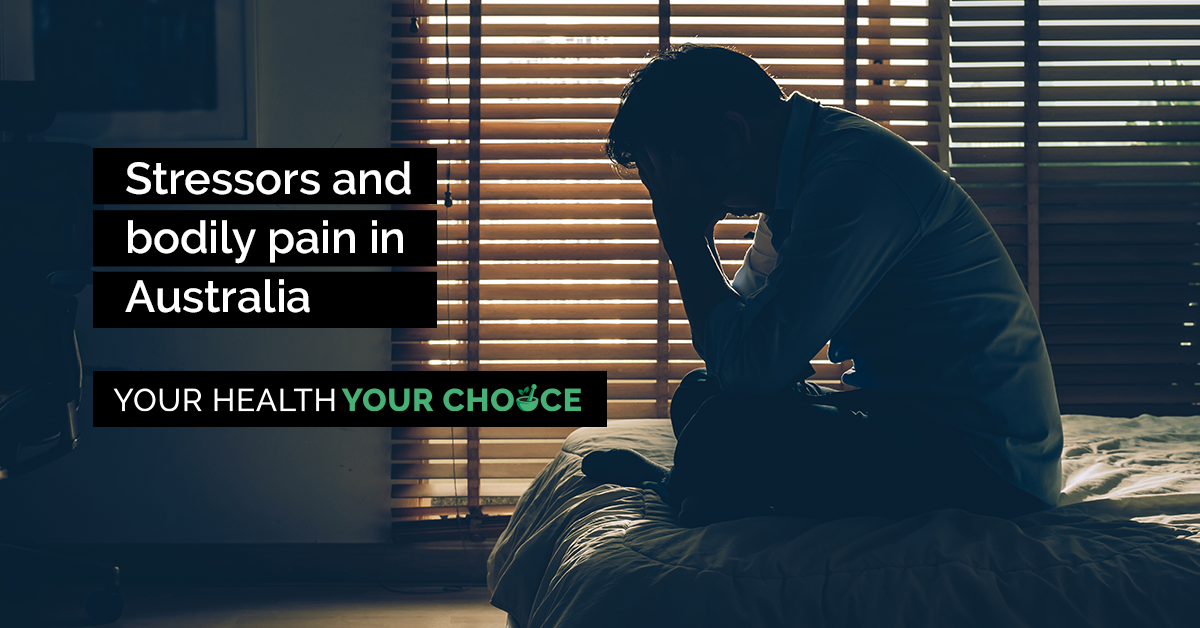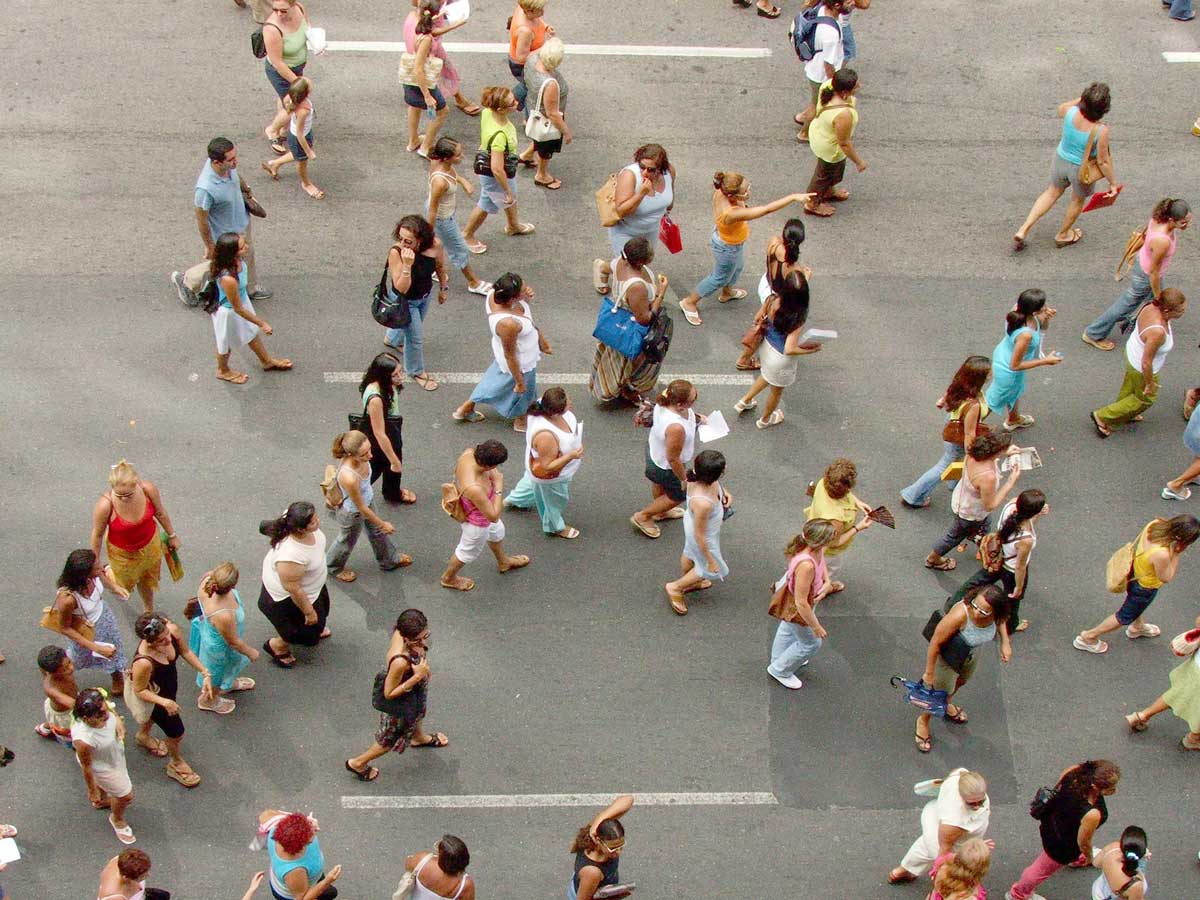5 July, 2022
ABS findings on stressors and bodily pain in Australia

New figures from the Australian Bureau of Statistics (ABS) provide an insight into Australians’ experience of stressors and bodily pain.
In response to the COVID-19 pandemic, questions on experience of stressors were included in the ABS National Health Survey 2020-21. These questions were asked of people aged 18 years and over who directly experienced, or had someone close to them experience, selected stressors. The ABS defines stressors as:
“… events, circumstances, or conditions (such as illness, unemployment, and bereavement) that occur in a person’s life that may negatively impact the individual’s health or wellbeing, or someone close to them.”
Key survey findings:
– 43.7% of adults experienced one or more stressors such as illness or bereavement
– Women were more likely to experience one or more stressors compared to men (45.0% compared to 42.2%)
– Seven in ten (71.1%) adults experienced bodily pain in the four weeks prior to the survey
Role of traditional medicine in dealing with chronic pain
Before presenting a more detailed summary of the National Health Survey 2020-21, it is worth noting that chronic pain is a major health burden in the community, affecting 1 in 5 Australians aged 45 and over.
Around three in four Australians use some form of natural therapy/ complementary medicine, which can play an important role to help manage chronic pain, from a variety of different causes.
The following summary of findings of the National Health Survey 2020-21 is sourced from the ABS webpage:
Experienced stressors in the past 12 months:
In 2020-21, 43.7% of people aged 18 years and over experienced one or more stressors, while one in five (20.0%) experienced two or more stressors:
– Women were more likely to experience one or more stressors compared to men (45.0% compared to 42.2%)
– Similarly, women were more likely to experience two or more stressors compared to men (22.0% compared to 18.0%)
– Younger people were more likely to experience stressors with 48.3% of people aged 18-24 experiencing one or more stressors compared to 34.8% of people aged 65 years and over.
Types of stressors experienced:
In 2020-21, the most common stressors experienced in the past 12 months were:
– Mental ill health (12.8%)
– Death of a family member or close friend (12.4%)
– Serious illness (11.3%)
– Unable to get a job (9.9%)
– Loss of job (9.8%).
In general, young people were more likely to report mental ill health, being unable to get a job, and loss of job as a stressor experienced in the last 12 months. In comparison, older people were more likely to report serious illness as a stressor. Experiencing the death of a family member or close friend as a stressor fluctuated over the age groups.
– Almost one in five people (19.2%) aged 18-24 reported mental ill health as a stressor compared to 6.1% of people aged 65 years and over
– Almost one in six people (15.7%) aged 18-24 reported not being able to get a job as a stressor compared to 3.4% of people aged 65 years and over
– About one in eight people (13.0%) aged 18-24 reported loss of job as a stressor compared to 3.8% of people aged 65 years and over
– One in seven people (14.5%) aged 65 years and over reported serious illness as a stressor compared to 8.3% of people aged 18-24 years.
Characteristics of people who experienced stressors:
In 2020-21:
– Seven in ten people (69.1%) who experienced high or very high psychological distress reported experiencing one or more stressors
– 64.7% of people who rated their health as fair or poor experienced one or more stressors
– Four in ten people (39.1%) who experienced severe or very severe bodily pain in the last four weeks reported experiencing two or more stressors.
Experienced bodily pain in the last four weeks:
In 2020-21, seven in ten (71.1%) people aged 18 years and over experienced bodily pain in the last four weeks:
– Almost half (46.7%) experienced very mild or mild bodily pain
– 18.1% experienced moderate bodily pain
– 6.4% experienced severe or very severe bodily pain
– Of those who experienced bodily pain, 62.6% reported interference with their work in the last four weeks.
People aged 75 years and over were more likely to experience bodily pain in the last four weeks compared to people aged 18-24 years:
– Overall, 84.0% experienced bodily pain compared to 55.8%
– 10.6% experienced severe or very severe pain compared to 2.4%
– 29.0% experienced moderate pain compared to 10.1%
– Both age groups experienced similar rates of very mild or mild pain (43.9% and 43.1%).
Women were more likely than men to experience bodily pain and have bodily pain interfere with work in the last four weeks:
– 73.9% of women aged 18 years and over experienced bodily pain compared to 68.2% of men
– 63.2% of women aged 18-24 years experienced bodily pain compared to 47.8% of men
– 66.1% of women aged 18 years and over experienced interference with work compared to 58.4% of men.
Women impacted more than men:
Painaustralia Chief Executive Officer, Mrs Giulia Jones, said:
“These figures confirm the findings of a report Painaustralia commissioned in 2020. The Deloitte Cost of Pain in Australia report estimated that 1.8 million women lived with chronic pain compared to 1.5 million men. It also found there were 168,000 women of working age between 45 and 49 who were suffering from chronic pain.”
“Statistics show that pain affects women more than men and it is interesting to note that pain affects all age groups, not just the elderly,” she said. “We also know that pain can lead to many Australians being forced to leave the workforce, with 40 per cent of early retirement in Australia due to long-term pain.”
She said, “We need governments of all levels to fund practical solutions for pain management to ensure that we address this issue and support women to grow their financial strength in the workforce.”
Role of natural therapies should not be overlooked:
It is now widely acknowledged that the misuse and overuse/over-prescription of opioid drugs often compound people’s suffering due to problems of dependence (addiction), accidental overdose, hospitalisation and even death. The Australian Institute of Health & Welfare (AIHW) has identified opioid use and its associated harms as an issue of great public health interest.
Solutions should incorporate the valuable role that natural therapies and complementary medicine can and do play in helping people manage chronic pain, an ‘elephant in the room’ that is often overlooked.
Over the past decade, good evidence has accumulated showing the benefits of mind-body therapies, acupuncture, some nutritional supplements and other complementary therapies for treating and/or alleviating pain.
This has resulted in the American College of Physicians (ACP) updating its evidence-based clinical practice guideline recommending that physicians and patients should treat acute or subacute lower back pain with non-drug therapies, including traditional and complementary therapies/practices such as massage, acupuncture, spinal manipulation (chiropractic/ osteopathy), mindfulness, tai chi and yoga.
Sources:
Australian Bureau of Statistics. Stressors and bodily pain – Key findings on experience of stressors and bodily pain in Australia. https://www.abs.gov.au/statistics/health/health-conditions-and-risks/stressors-and-bodily-pain/2020-21
Australian Institute of Health & Welfare. Chronic pain in Australia. https://www.aihw.gov.au/reports/chronic-disease/chronic-pain-in-australia/summary
Your Health Your Choice. Role of complementary medicine in chronic pain. https://www.yourhealthyourchoice.com.au/news-features/role-of-complementary-medicine-in-chronic-pain/
Your Health Your Choice. Your Stories: Natural therapies offered me relief from severe menstrual pain. https://www.yourhealthyourchoice.com.au/news-features/your-stories-natural-therapies-offered-me-relief-from-severe-menstrual-pain/
PainAustralia. Right now, women in Australia are more likely to live with physical pain impacting on their ability to work. https://www.painaustralia.org.au
« Return to News & Features
